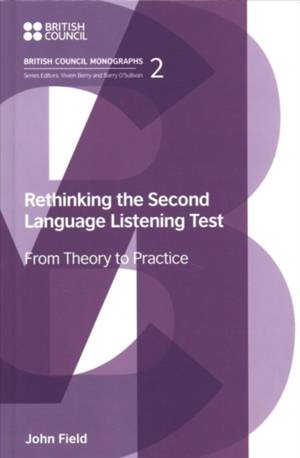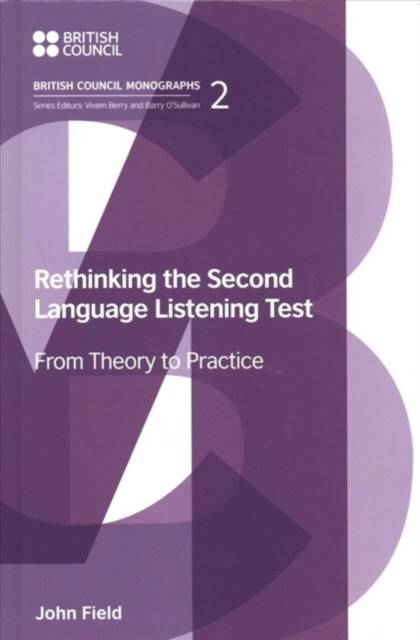
- Retrait gratuit dans votre magasin Club
- 7.000.000 titres dans notre catalogue
- Payer en toute sécurité
- Toujours un magasin près de chez vous
- Retrait gratuit dans votre magasin Club
- 7.000.0000 titres dans notre catalogue
- Payer en toute sécurité
- Toujours un magasin près de chez vous
104,95 €
+ 209 points
Format
Description
Rethinking the Second Language Listening Test argues that the key to more valid testing of second language listening lies in a better understanding of the nature of the skill and of the signal that listeners have to decode. Using this information as a point of departure, it takes a critical look at many of the myths and conventions behind listening tests and provides practical suggestions as to the ways in which they might be rethought. The book begins with an account of the various processes that contribute to listening in order to raise awareness of the difficulties faced by second language learners. The information feeds in to a new set of descriptors of listening behaviour across proficiency levels and informs much of the discussion in later chapters. The main body of the book critically examines the various components of a listening test, challenging some of the false assumptions behind them and proposing practical alternatives. The discussion covers: the recording-as-text, the recording-as-speech, conventions of test delivery, standard task formats and item design. Major themes are the critical role played by the recorded material and the degree to which tests impose demands that go beyond those of real-world listening. The following section focuses on two types of listener with different needs from the general candidate: those aiming to demonstrate academic or professional proficiency in English and young language learners, where level of cognitive development is an issue for test design. There is a brief reflection on the extent to which integrated listening tests reflect the reality of listening events. The book concludes with a report of a study into how feasible it is to identify the information load of a listening text, a factor potentially contributing to difficulty.
Spécifications
Parties prenantes
- Auteur(s) :
- Editeur:
Contenu
- Nombre de pages :
- 140
- Langue:
- Anglais
- Collection :
Caractéristiques
- EAN:
- 9781781797143
- Date de parution :
- 28-08-18
- Format:
- Livre relié
- Format numérique:
- Genaaid
- Dimensions :
- 155 mm x 234 mm
- Poids :
- 589 g

Les avis
Nous publions uniquement les avis qui respectent les conditions requises. Consultez nos conditions pour les avis.






